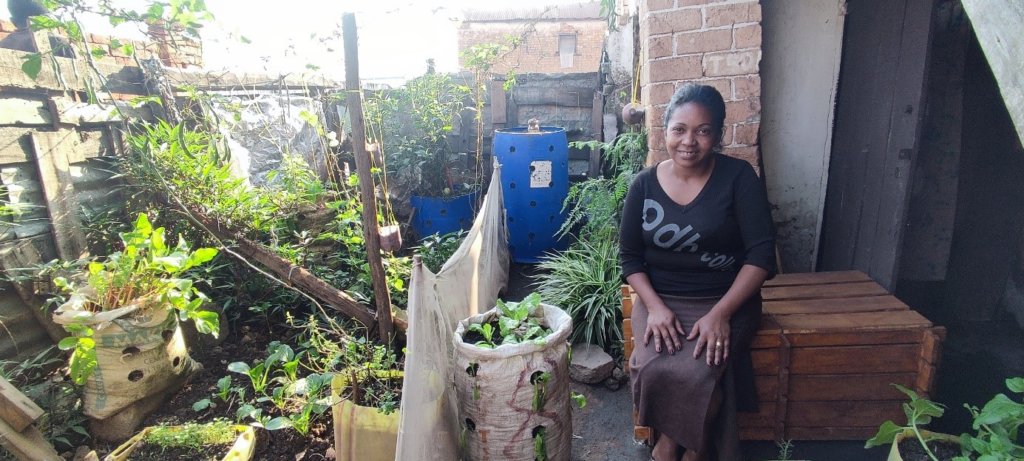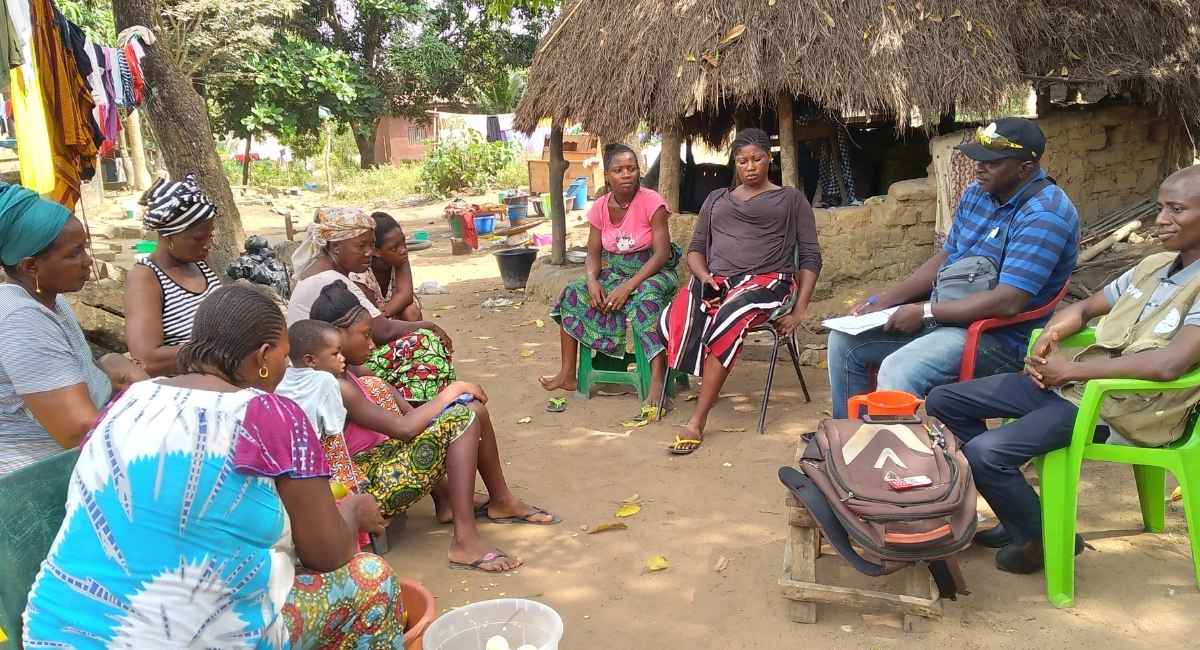In urban areas of Madagascar, food and nutrition security levels are very worrying: 35.5% of children under the age of five suffer from delayed growth – higher than the WHO acceptable level of 30% – and 26.4% of women of childbearing age are anaemic[1]. For several years, the capital Antananarivo has been experiencing strong demographic pressure, with 1.2 million inhabitants, i.e. a quarter of the country’s urban population. This pressure is generating significant land, environmental and food challenges, as rapid urbanisation is reducing exploitable agricultural space, diminishing the city’s food supply capacities.
Since 2022, GRET has been rolling out a strategy to develop urban agriculture as part of the Aintsoa project, funded by Agence française de développement. This gender-sensitive strategy, which is being deployed in close collaboration with the municipality of Antananarivo, is benefitting 800 economically vulnerable households and prioritising women.
Making maximum use of available space to produce nutrient-rich foods
Several square metres and appropriate agricultural systems suffice: courtyards, balconies, patios, walls and roofs are exploited. In flood risk areas, off-ground systems – mainly vertical – are used. To obtain a maximum number of harvests in a year, short-cycle crops are prioritised. These are mainly leafy vegetables, such as napa cabbage, paracress or herbs. But other fruit, legumes and tubers are also grown. They contribute to meeting families’ food requirements, providing proteins and micronutrients.
Bakoly RALAIARISOA has been farming for nine months, thanks to GRET’s support: “Previously, when I had no money to buy vegetables, we would eat rice with nothing else. Thanks to the vegetable garden, we are now using harvests of paracress and beans to diversify our meals. I can even buy a little meat with the money I save”, she says.

Contributing to the city’s agroecological transition
Urban agriculture valorises locally available urban waste. Household waste is transformed into compost and used as organic fertiliser in vegetable plots. Non-biodegradable waste is converted for use as agricultural containers.
This form of agriculture is very beneficial for the environment, as products are distributed via short channels: straight from the vegetable plot to people’s plates. It enables reduction of transport-related greenhouse gas emissions and makes it possible to compost organic waste, while also providing extremely fresh produce to consumers. It also contributes to revegetation of urban spaces.
Rolling out a sustainable strategy
To promote a more agroecological mode of urban production, actions to raise awareness, train and support households are conducted in parallel to initiatives in schools introducing children to urban agriculture. With the help of their teachers, pupils participate in the implementation and upkeep of vegetable plots in their school.
Six months after it was created, the vegetable plot at Manjakaray’s public primary school had produced 120 kg of fruit and vegetables that were used to prepare almost 1,000 meals in the school canteen.
Francette Ravololonirina, the principal of this school is convinced of the advantages offered by school vegetable plots: “I noticed that the pupils were more motivated to attend school because they enjoy the activities at the vegetable plot, especially watering it. Some have even introduced their parents to urban agriculture at home, using empty food tins and plastic bottles. I believe that, ultimately, this knowledge will enable them to achieve a certain level of food autonomy and will help them to reduce their expenditure.”
With the same aim of making the activity sustainable, some of the women trained and supported to develop urban agriculture in their homes are now training a network of women who are conveying urban agriculture. Convinced by these innovations, they are committed to raising awareness and dissemination of techniques among households in their neighbourhoods, while ensuring follow-up and providing advice.
The challenge of water management
While practising urban agriculture has many advantages, it also involves some constraints, such as water management during winter, when ponds dry up. There are also ongoing concerns about the hygienic quality of this water. In winter, families are therefore obliged to purchase water from supply networks. This is significantly less ecological and is a substantial expense for households. Innovative solutions are currently being tested to address this issue. Among these, the development of a cost-effective drop-by-drop system adapted to suit the various agricultural containers, and the use of urban mulch produced using local urban waste. This makes it possible to maintain soil humidity. A rainwater harvesting system will also be tested in a community garden or a school.
The Aintsoa project, funded by AFD and conducted by GRET and the Malagasy social business Nutri’zaza, was designed to fight against malnutrition and health, social and gender inequalities in urban areas. In August 2023, GRET invited its partners to a workshop to share the results of its diagnosis of urban agriculture in Antananarivo and presented its intervention strategy on the subject. The Antananarivo urban community is a partner, contributing to the implementation of urban agriculture activities.
[1] Source: fifth Demographic and Health survey in Madagascar (EDSMD-V) conducted in 2021 by INSTAT, in collaboration with the Ministry of Public Health.





